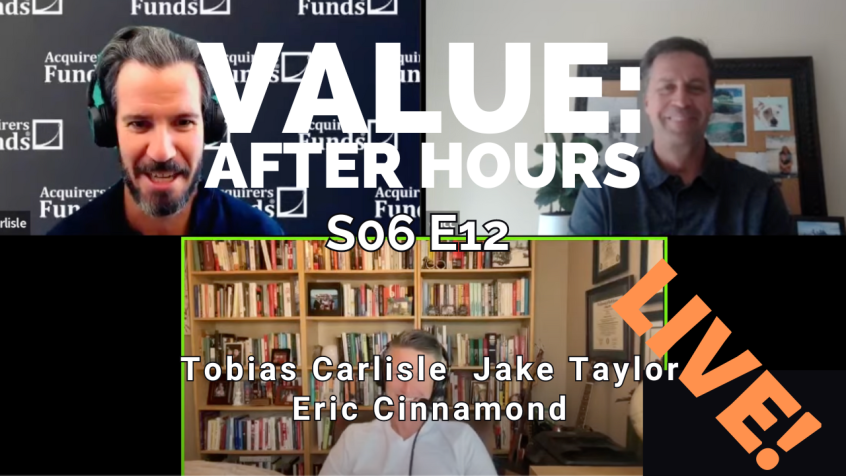During their latest episode of the VALUE: After Hours Podcast, Carlisle, Taylor, and Eric Cinnamond discussed The Power of Absolute Return Investing. Here’s an excerpt from the episode:
Eric: Yeah. Absolute for us is an attractive return over a full market cycle. We discount our cash flows and our valuations at 10% to 15%. So, when people ask, what does that mean? It means we’re trying to achieve our objective on each equity idea we purchase, which is 10% to 15%. And historically, we’ve done that with our equities.
But what’s very different about this strategy is we can hold cash when valuations are expensive and don’t make sense, and we can’t achieve that absolute return objective on the equities. So, cash could fluctuate from being fully vested to– We’ve been as high as 90% or so. And right now, we’re in one of those periods where we have quite a bit of cash. So relative return investment, of course, is you’re just thinking about the benchmark, trying to keep up, trying not to look too different. You want to beat the benchmark, of course, but you can’t look too different. You might get fired.
So, relative return investing is a little tricky. You can lose 30% and still look good, relatively. And that for us and a lot of our clients, they have no interest in that being down quite a bit. But being a benchmark, doesn’t pay the bills, so to speak. So, yeah, it’s really different. This is how money was run in the old days. You find value, you buy it. When you don’t, you don’t. It’s very commonsense tilt. But yeah, I think all the passive investing right now, the relative return, I think is definitely the majority of how most assets are allocated these days.
Tobias: What’s your bogey? What’s your return bogey for putting something on?
Eric: We use the S&P 600. But you could look at I guess all the small cap benchmarks, the Russell 2000 value, they’re all similar since inception of the strategy. But we don’t spend too much time on it. We’re just required to have a benchmark. But it’s not something we really pay too much attention to.
Tobias: I mean, more in terms of like, what’s the–?
Jake: Internal hurdle.
Tobias: Yeah, what sort of return do you need before you’ll think about putting it on?
Eric: The absolute return?
Tobias: Yeah.
Eric: Yeah, it’s at 10% to 15% annually on the equities. Yeah. Since the fund, with the strategy has been around for a while, but the fund itself was launched in April 19th. We generated seven and a half after fees, which is a little better than the Russell, about the same as the S&P 600. But the equities, because we’ve only been about 20% invested over that time, the equities have returned over 20% annually since inception. So, the equities have done very well. So, we’re really happy about that. We’re happy about being able to keep up with the market without risking that much capital.
So, again, we’ll have our five-year in April. So, we’re hanging in there. We obviously have our position as of last disclosure. We’re not going to be up 20%, 30% this year unless prices get a lot more interesting, anything like that, or even hitting our equity required rates of return on the portfolio that will be tough because of all the cash. So, the cash can bring down our returns over time, but the equity performance can do quite well, because we’re not being forced to be fully invested, we’re not being forced to overpay, and that often for us anyways enhances the equity returns.
Jake: Yeah. It’s fairly astonishing to me, actually, that given this time period that you’ve been operating in and to be beating a fully invested benchmark is– It speaks to the good things that can happen with an opportunistic mindset.
You can find out more about the VALUE: After Hours Podcast here – VALUE: After Hours Podcast. You can also listen to the podcast on your favorite podcast platforms here:
For all the latest news and podcasts, join our free newsletter here.
Don’t forget to check out our FREE Large Cap 1000 – Stock Screener, here at The Acquirer’s Multiple:



